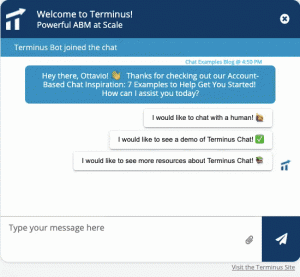
More and more eCommerce providers rely on a personalised user experience for their customers.
The best example of a wide and far reaching user experience is the fashion industry.
There are now 52 seasons a year instead of four which can make it difficult for retailers to know what the next step is to take for their customers. With that in mind retailers invest heavily in customer feedback. Many platforms even offer its customers their own WhatsApp channel for individual shopping advice, and of course to gain more insights.
The way many fashion platforms work is simple: online shoppers are asked about their taste in fashion and then receive suggestions for suitable outfits. This personalised approach follows the model of stationary retail trade, only that the consultation takes place online and the goods are delivered directly to the customer’s home.
In this article we show how shop operators can learn from the online behaviour of their customers and how they should react in good time to their needs.
What Can I Do If I Don’t Have Enough Customer Data To Individualise My Products?
Not everyone has the resources for individual advice. But, you can still adapt and optimise your offer to individual customer requirements. The most important prerequisite for this is……wait for it……to know your customers.
In a brick and mortar store, the staff may know the names of their regular customers, as well as their sizes and preferences.
Online providers are dependent on questionnaires and feedback of some sort. Now, of course, you can’t annoy every visitor with a huge questionnaire but you can use monitoring or tracking tools to learn more about the behaviour of your users in your online shop.
Get To Know And Understand Your Customers
Define your customer groups and map them using clusters or personas.
Cluster analysis is a statistical method with which similarity structures of certain parameters can be determined. Similar parameters are assigned to a group, creating a cluster. Everyone wants to be as individual as possible but in fact they are not. Sorry, but that’s just the way it is.
Your online shop has a wide variety of customer groups, e.g. your regular customers, browsers, sales buyers, bargain hunters, or brand aficionados. In retail you can easily observe the behaviour of all your customers. For example, how they move around the online store or which products they have earmarked. In order to be able to put oneself into the experience of a customer on the web, you have to make the customers actions visible.
A number of individual characteristics of your customers are available to you online. Analyse these and form personas from them.
Personas are fictitious persons representing typical users of a target group. They clarify important characteristics of the target groups and help in design decisions in the development phase as well as in the play-out of personalised content.
These fictitious persons must under no circumstances be guessed or made up off the top of your head. Personas should be based on real information about the target group. Use whatever available information you have from the a web analysis: What did their previous shopping baskets look like? What is the time spent on certain page areas? Further information can be collected, for example, through interviews, surveys or user tests.
How Do I Define The Right Personas For My Online Shop?
Through a detailed on-site customer-journey analysis of your users, you can see what they do on the site, what paths they take and how their personas differ. In surveys, people often tend to respond in a socially compliant way, i.e. they provide information that is expected of them. Observation of the behaviour provides more valid results at this point, since the principle of pattern recognition can be used. Research has identified recurring patterns of movement that suggest certain user behaviour.
The procedure is as follows: in an initial status quo analysis, usability problems can be reliably identified which can be remedied and usage patterns can be collated. This can be used to create needs or personalisation concepts that are then played out on the user’s next visit if the user can be identified on the basis of his or her behaviour pattern and assigned to a specific persona. With this information you have the possibility to place special content on the pages that accompany the shop visit.
Offer users the opportunity to branch deeply into the site by offering further links and not letting the on-site customer journey run out of steam. Make small but clever use of your platform such as placing brands strategically for the brand aficionados. The returns analysis helps you to guide users through the different stages of the purchase process – from product selection to checking out reviews to comparing offers and finally placing an order – and to adapt the site to the specific behaviour patterns in the respective phase. Through this process you will establish brand loyalty.
Conclusion – Simple Economics
Everything mentioned here is basic customer service and usability. These points should be at the forefront of any business when they build a sales and marketing strategy. However, you would be surprised at how many business’s cannot implement good customer service and don’t see it is a necessity. You must always want the best for your customers, not for your business. It may sound silly but when you take care of your customers properly, you stand a good chance of building customer loyalty and in turn successfully growing your business. Its very simple economics.
The post Empathetic Websites: Knowing Your Customers Through User Personas appeared first on Search Engine People Blog.
(71)
Report Post







